For our first full day in the Adirondacks, we decided to make it to Fort Ticonderoga to take in some colonial era history and see the Lake Champlain region. The other choices were Lake George, Lake Placid, and the Olympic Village and Ski area from the 1932 and 1980 Olympics. We decided on Fort Ticonderoga because we were more curious about the Lake Champlain region and Vermont, Fort Ticonderoga was rated higher that Fort William Henry in Lake George, and we wanted to spend July 4th on Lake Placid. We were not disappointed. Even though it was a hot, humid, generally miserable day weather wise (at least it didn’t rain!), we became enthralled with the Lake Champlain Colonial history from 1750-1785 and ended up spending the entire day soaking it in. We started out knowing vaguely about Fort William Henry and the French and Indian War from “The Last of the Mohicans”, but we knew very little about the larger and more strategic Fort Ticonderoga just 20 miles to the North.
Fort Ticonderoga route
Let me back up a bit though, because I don’t want to skip over the delicious breakfast at the Snow Goose B&B. First of all, the previous night when we checked in, we negotiated with Amy a slightly later 930AM breakfast than the standard 830AM time (we explained we were not morning people). Apparently, people come to the Adirondacks to do stuff in the mornings, like conquering mountains and cycling endlessly uphill. Meh. So we had every intention of waking up for a 930AM breakfast, but actually ended up not setting an alarm, using eye masks, and sleeping 11 hours – making it a rushed 1030AM start for us. We came down profusely apologizing for our tardiness and offering to skip breakfast that morning, but Amy graciously hosted us anyways. Apparently the other guests opted for a 930AM start as well so breakfast had not quite wrapped up. The first morning was an assortment of cold items (yogurt, fruit, toast) and some delicious blueberry streusel warm muffins, freshly made, with lemon icing. I am drooling again just thinking of them.
We didn’t leave the B&B in earnest until around 1130AM, which again forced our hand a bit to Fort Ticonderoga, because it wasn’t *quite* as far away as Lake George, which we decided to save for our last day (we would be driving back that way to Albany anyways). We set out through the beautiful Adirondack country until we got in to the town of Ticonderoga and the Lake Champlain region, about 45 minutes away (southeast). Incidentally, Ticonderoga loosely translates from Iroquois to “the joining of two waters.” We went directly to the fort, paying a whopping $24 per person for entry. We choked at first, but then we realized, based on the number of activities that were offered, we could easily spend the entire day learning and experiencing the history, so we did it.
The grounds were well-maintained (Fort Ticonderoga was now run by a private non-profit, sustained by visitors and taking no government funding) and ample. It included a visitor’s center, restaurant, and gift shop; a garden; the fort itself including an air-conditioned museum; and a dock area for lake tours. We started by finding a nice shady spot to park and proceeding to the visitor’s center, where we got the lay of the land. We discovered that the guided fort tour began at 115PM and also at 3PM, which was included in the entry, and the boat tour was at 1PM and 330PM, but was an added $16 per person. We decided that to make the best use of our time, and to beat the heat, getting out on the boat first sounded like the best idea, and then circling back to the fort itself to continue cementing the history lesson. The last piece of the puzzle was a visit to Mount Defiance, which was not on the Fort Ticonderoga grounds; however, it completed the story and was also included in our admission. We would save that for the very end.
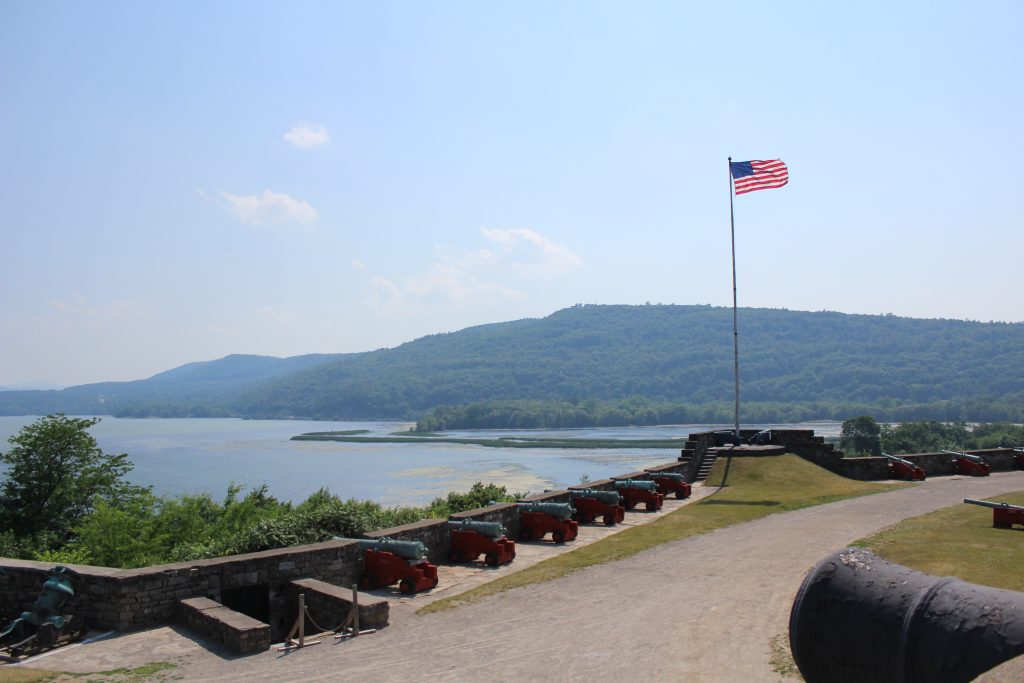
Fort Ticonderoga
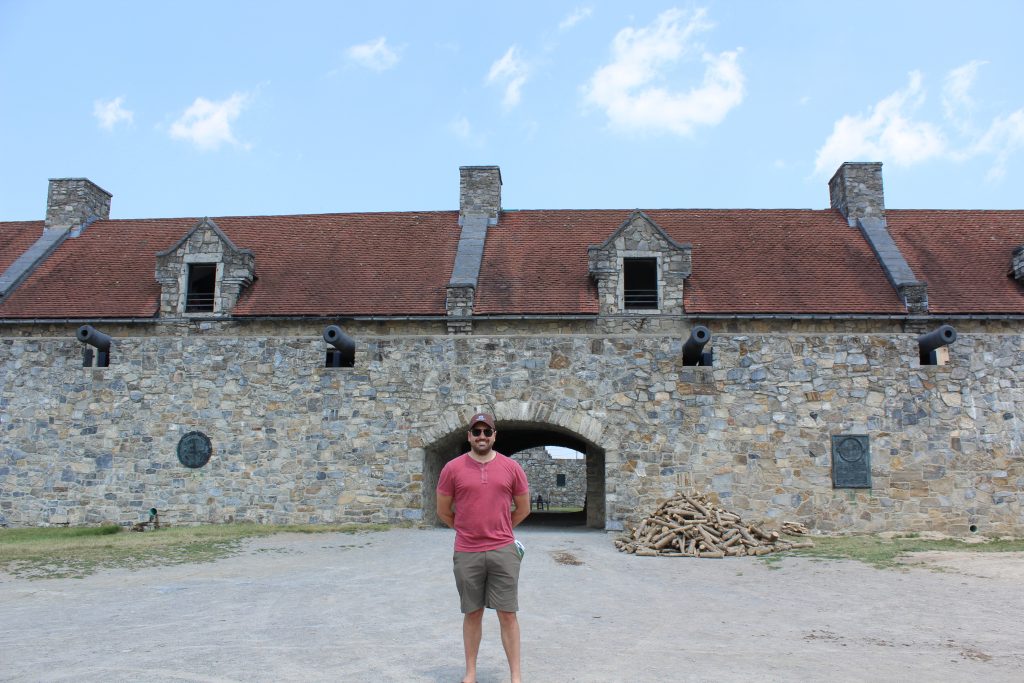
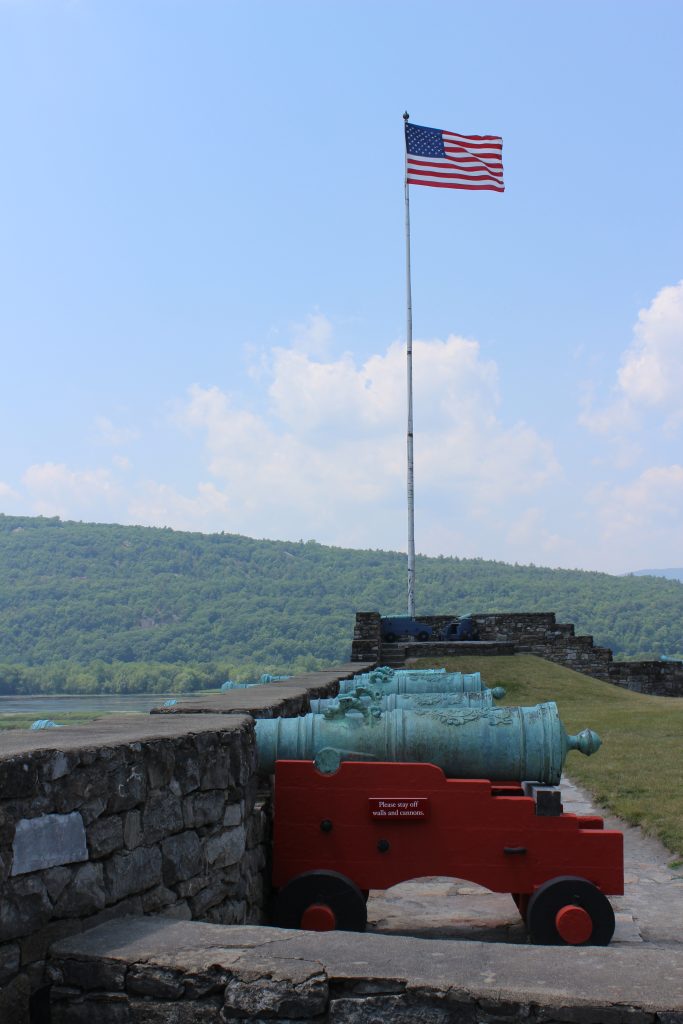
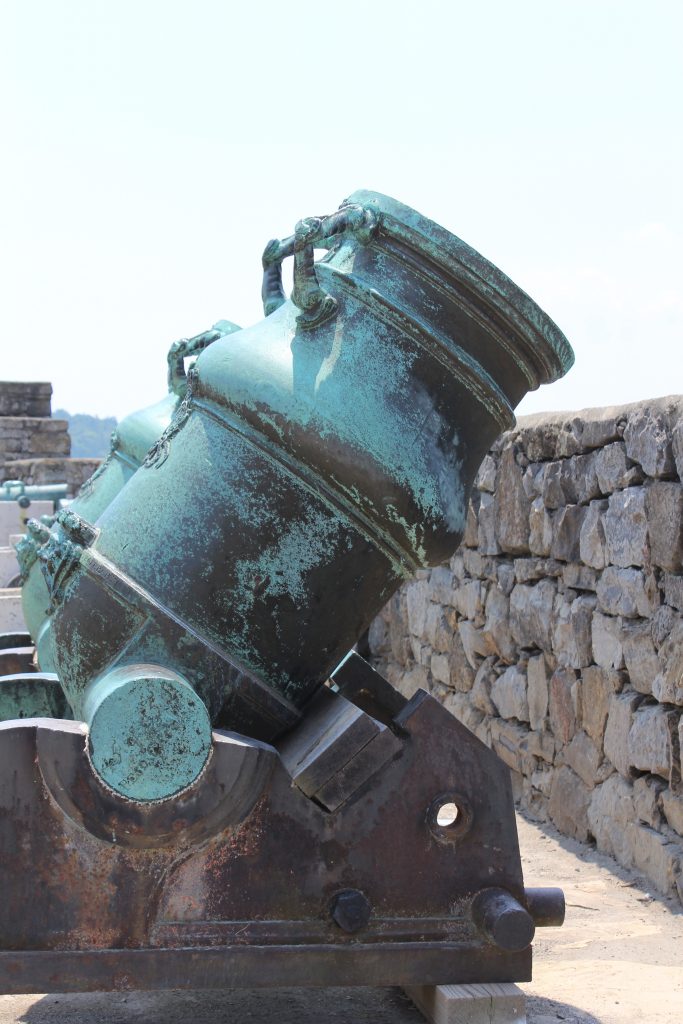 Between arrival and the boat launch, we walked around the fort a bit, witnessed a fife and drum performance by local highschoolers (a great summer job if you could get it!), and toured the gardens. Staff were hard at work actively planting and harvesting. We learned that the garden existed to feed the whichever army was currently housed at Fort Ticonderoga, and went through several iterations of destruction and creation every time the fort was burned down (which happened at least 3 times in its history – basically the defeated army didn’t want to leave provisions for the conquering army in each case).
Between arrival and the boat launch, we walked around the fort a bit, witnessed a fife and drum performance by local highschoolers (a great summer job if you could get it!), and toured the gardens. Staff were hard at work actively planting and harvesting. We learned that the garden existed to feed the whichever army was currently housed at Fort Ticonderoga, and went through several iterations of destruction and creation every time the fort was burned down (which happened at least 3 times in its history – basically the defeated army didn’t want to leave provisions for the conquering army in each case).
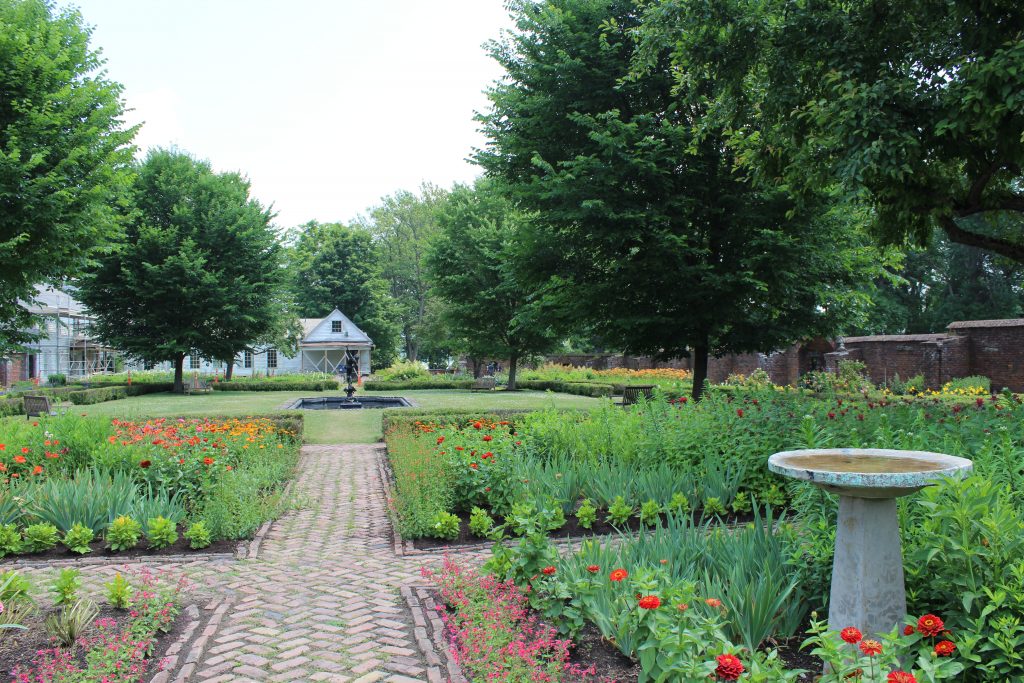
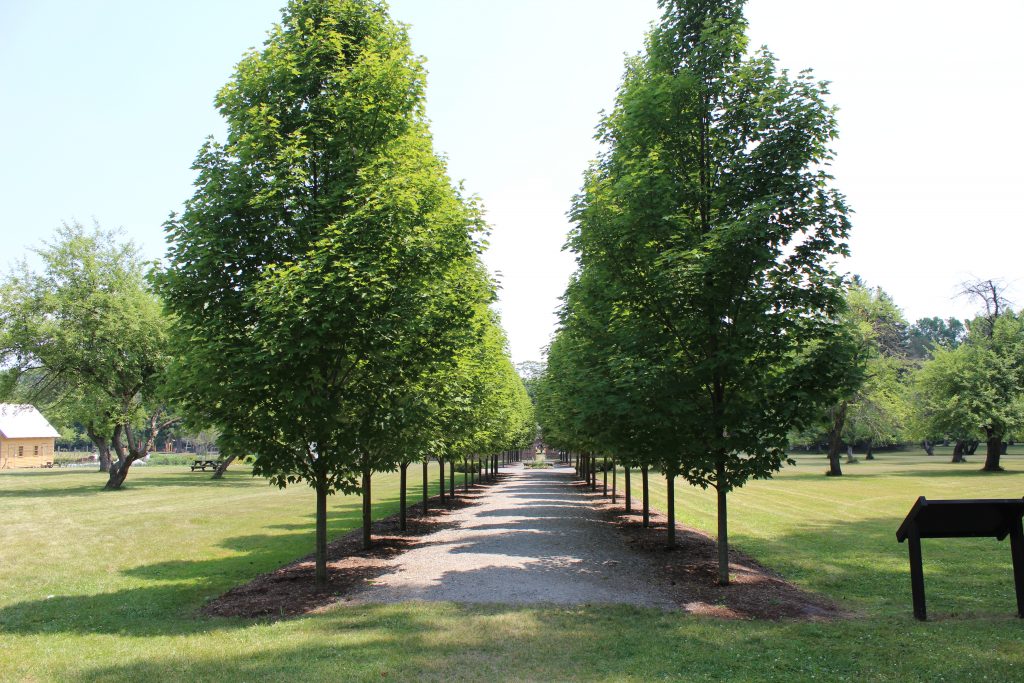
Fort Ticonderoga gardens
It was time to catch our boat, so we made our way to the dock at the base of the garden and embarked on to the Carillon (pronounced carry-on), which was the name of the original fort built by the French somewhere between 1755 and 1757.
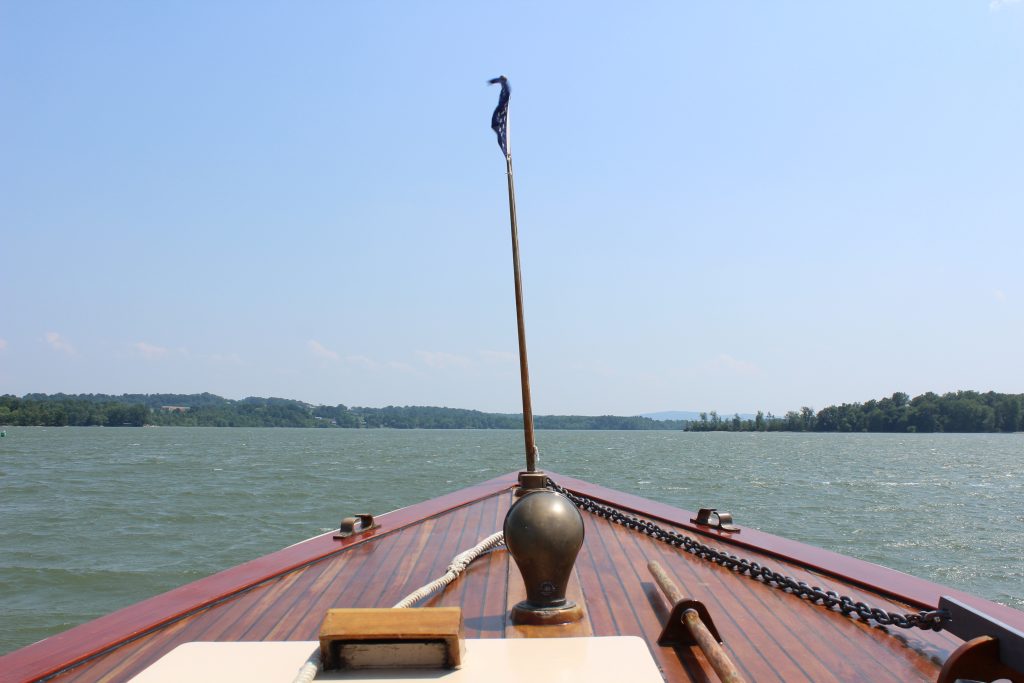
View from the Carillon
We had about 20 people total on our tour – our guide was Sam (a 28 year old female dressed in Colonial gear), and our captain was Bob. Sam immediately gave us a lay of the land, explaining the geography of the region and the strategic important of Fort Ticonderoga, hidden behind the tip of a peninsula on the south end of Lake Champlain.
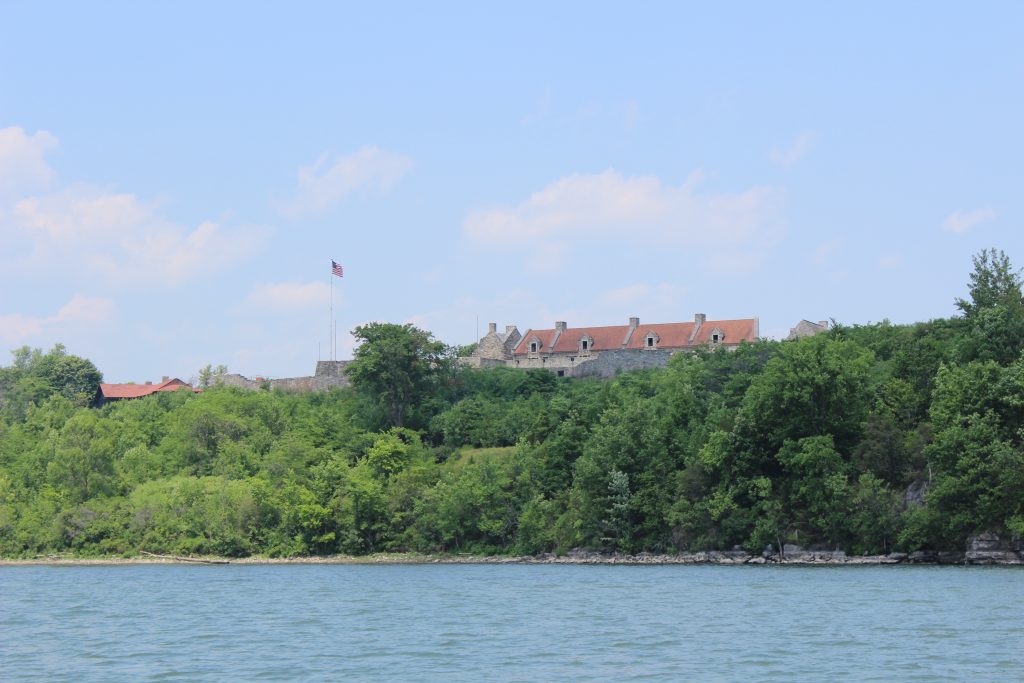
Fort Ticonderoga from Lake Champlain
It provided natural topography of a defensive position, as well as being offensively placed to control the lake, which was connected to the Hudson and all the way up to Montreal as well. It also provided access to La Chute river, which connected Lake George and Lake Champlain, and offered the French a directional flow towards Fort Ticonderoga that allowed them to harness water power to turn their saw mills and cut timber, generating crucial suppliers for the fort and the lower village at the base of the fort.
There were several areas of high ground which were also pointed out to us – Mount Independence, which was a peninsula on the Vermont side directly across Fort Ticonderoga – and Mount Defiance, which ultimately was used by the British to force the Colonial forces occupying Fort Ticonderoga in 1781 to abandon it after posting cannons on the strategic mount. Sam told us the story of the British colonel (Scottsman, actually) who rallied his men to push up two cannons on top Mount Defiance with the following motivational speech: “Where a goat can go, man can go. And where man can go, cannons can be drug behind him” or something to that effect.
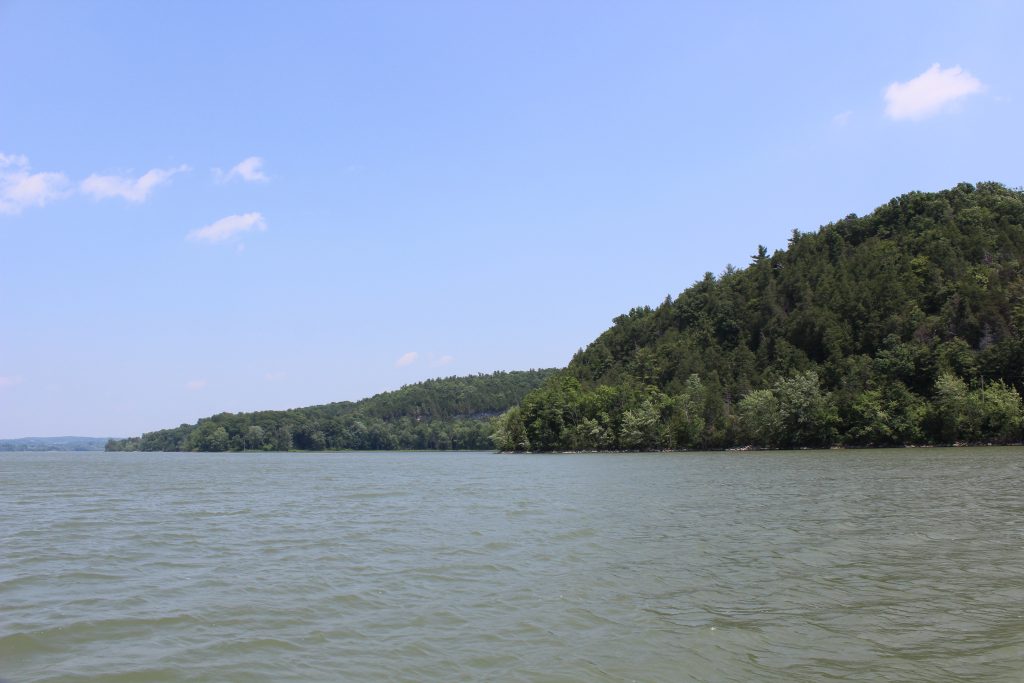
Mount Independence
Because of its enticing position, and also as a way to block further progress south to Albany, New York City, and even Fort William Henry, the fort changed hands many times – starting with the French in the 1755, to the British in the French and Indian War (7 Years’ War) in 1759, to the Colonists in 1777, and ultimately the British again in 1781. Each time it changed hands, the munitions store was blown up and the fort was burned only to be rebuilt again by the next inhabitant.
We also heard the story about Ethan Allen (and Benedict Arnold) and his Green Mountain Boys (Vermont army regiment), who bloodlessly, and with only 84 men stormed the fort in the middle of the night and captured it from the British. We found it interesting that 11 boats were supposed to show up to transport 200 men to take the fort, but only 2 did. Nobody knew why exactly, and we thought it could make a cool book or movie.
When the Green Mountain Boys took Fort Ticonderoga, it proved to be one of the dominoes that led to breaking the siege in Boston, and ultimately a victory in Saratoga where the British were forced to march from Fort Ticonderoga, losing many of their men on the way. Breaking the siege on Boston was only accomplished with the help of the dozens of cannons captured by the colonists at Fort Ticonderoga, which were transported on sleds over the frozen lake and river system to Massachusetts in the winter of 1775/1776. These victories, coupled with the ultimate abandonment of Fort Ticonderoga back to the British and a guerrilla retreat by the colonists back through Vermont that forced the British to chase them, bought them time to ultimately get to the battle of Yorktown. Yorktown (in Virginia) was the pivotal moment of the War of Independence, leading to an American victory.
The final fascinating tidbit we learned was about what lay on the bottom of Lake Champlain. The captain pointed out a couple of blips on his sonar graph as Sam explained that these were remnants of a temporary bridge that was built to transport men and goods from Vermont to New York across the like. The bridge was build (twice) by the Americans with first logs in the winter, and then batoes (small boats) that spanned the length of the lake (not too wide at the southern point). Eventually, the colonists use the bridge to retreat in to Vermont and offer a lengthy and costly chase to the British who divided their forces and followed them.
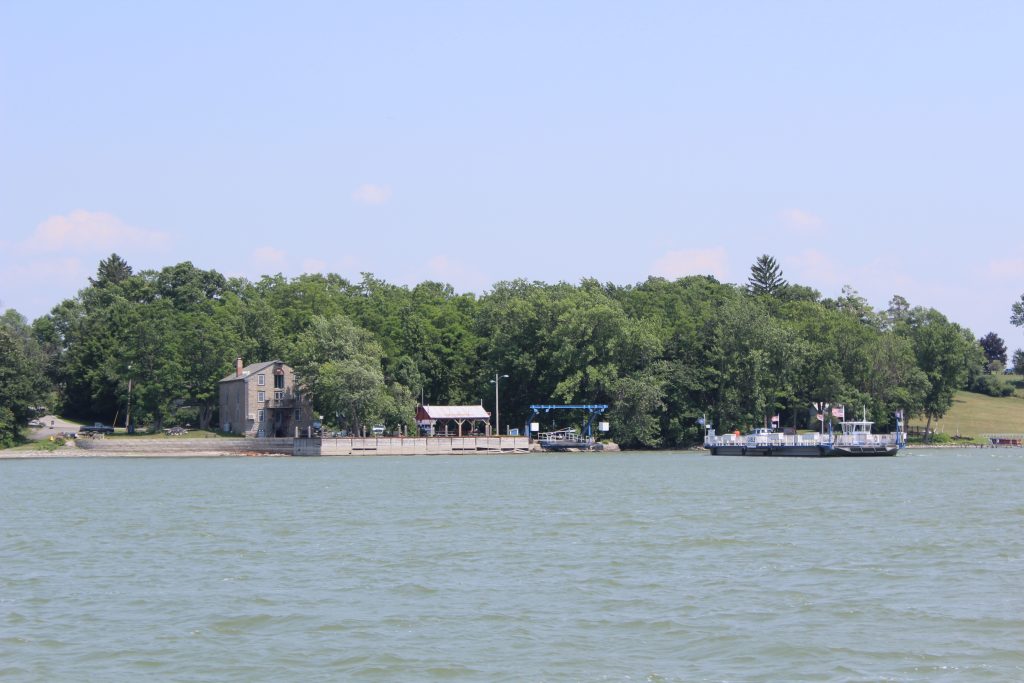
Modern day ferry lines where the temporary bridge once stood
The other thing that was great about this particular boat tour was that we got to purchase some Adirondack beer. We got some tangerine ale, and it was amazing on this sweltering day. Oh, and the boat was covered, so that helped save us from the sun as well. Taking the boat tour was a pro move on a hot day, all in all.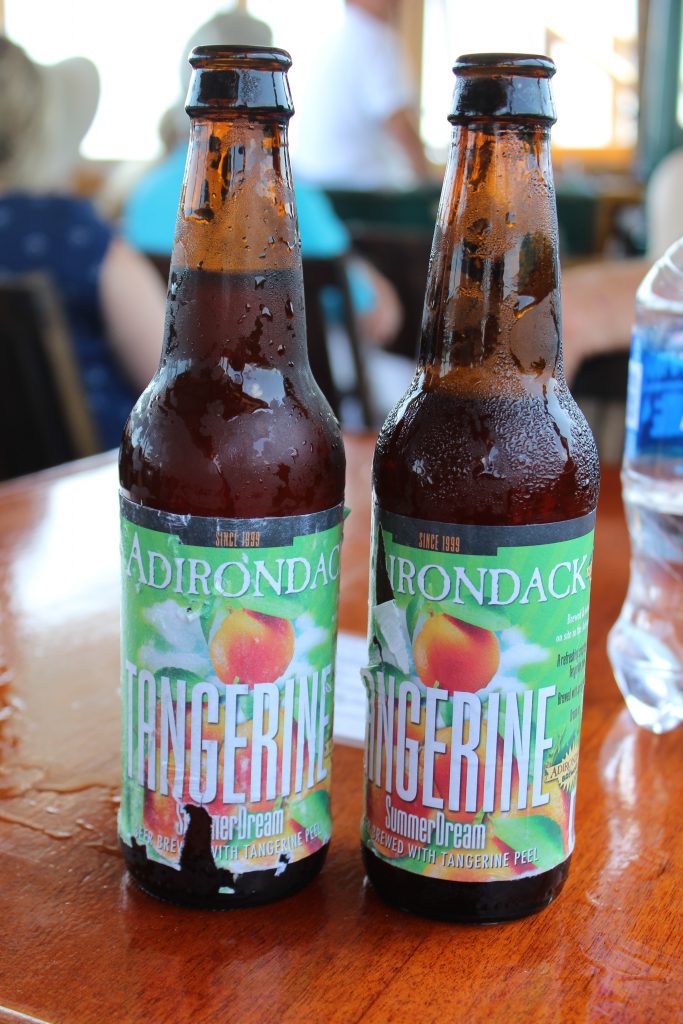
We can back from the boat tour feeling refreshed and filled with stories. We were soon beat back again by the heat, but did ultimately rally for another wonderfully guided tour of Fort Ticonderoga itself by another effusive historian. It was all the stuff you’d expect – the construction of the fort, the changing hands of the fort, the different rooms in the fort and their uses – which again reinforced the history we had just learned on the boat. After the short 20 minutes tour, we checked out the living history rooms where artisans were working their trades, and were sure not to miss the air-conditioned museum portion which had some artifacts uncovered during the reconstruction of the fort. Sadly, the stones used to construct the new fort were all from modern times, as the previous stones were stolen by neighboring colonists after independence to build their houses dotting the lakeside from New York to Vermont. Americans are a pragmatic people, if nothing else.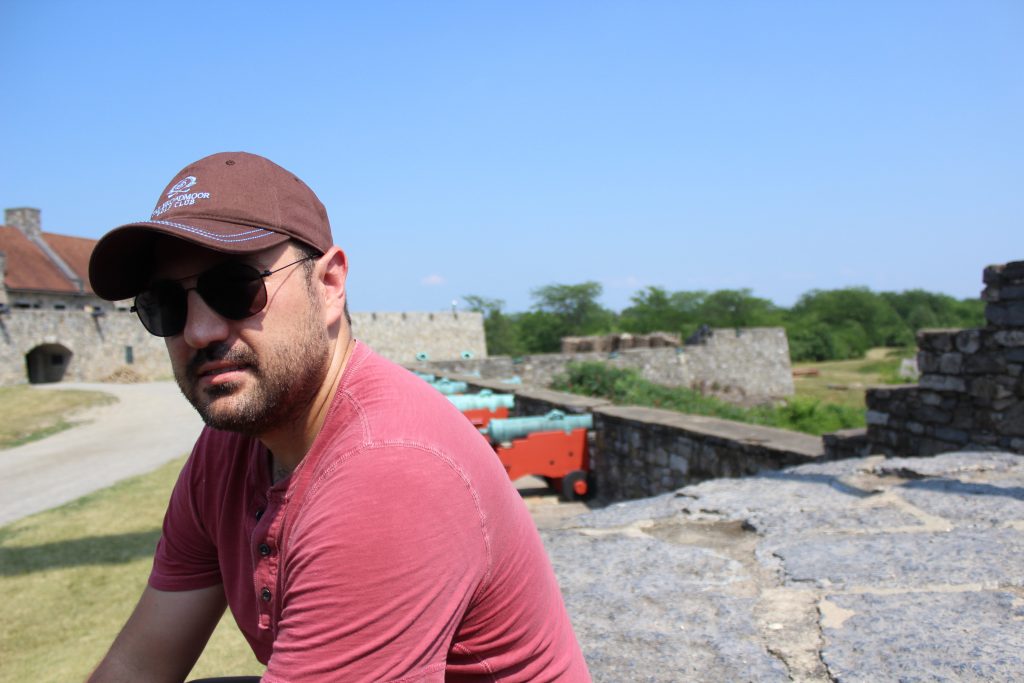
Around 4PM we exited the fort and drove to the town of Ticonderoga, where we would catch our final history lesson for the day atop Mount Defiance. We arrived around 415PM in the midst of the best storyteller of the day explaining the cannons planted by the British, and the retreat by the Americans through Vermont, and how these were critically important events to led to wins in Saratoga and elsewhere from 1777 onwards. This particular historian was one of the most enthralling story-tellers I had ever heard and we were absolutely engulfed in his narrative, forgetting everything else around us and even our own discomfort. He went on for about 15 more minutes, and really put a bow on the rest of the War for Independence, and on the various history lessons delivered to us throughout the day expertly. He also reminded us what a bad ass John Brown was, an American hero that recaptured Mount Defiance with a small contingent of men later in 1777, and then marched to Lake George. On his march he freed invalid American prisoner who were being guarded by the British, and then captured all of the British and had the POWs guard them with their own rifles.
We took some pictures at the end, and eventually made our way down the mountain again after striking out seeing Lake George.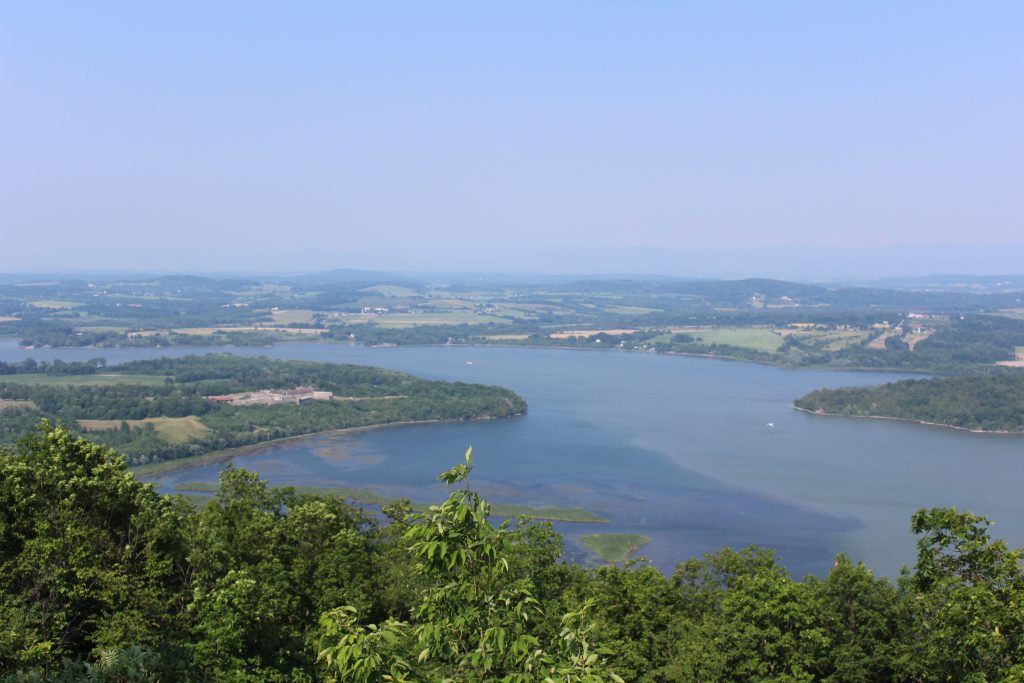
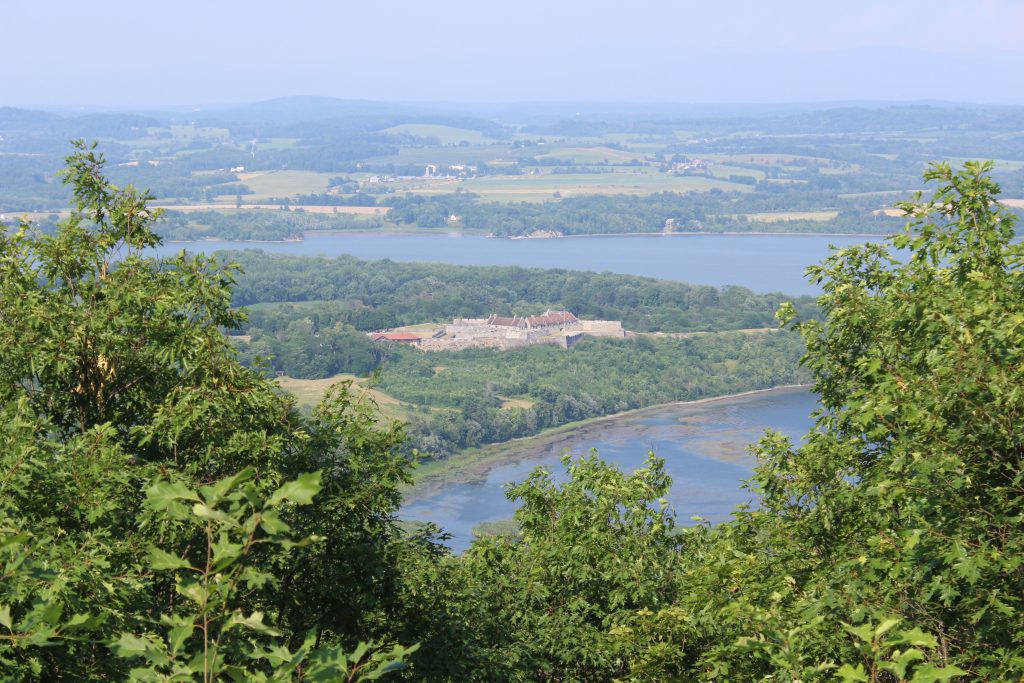
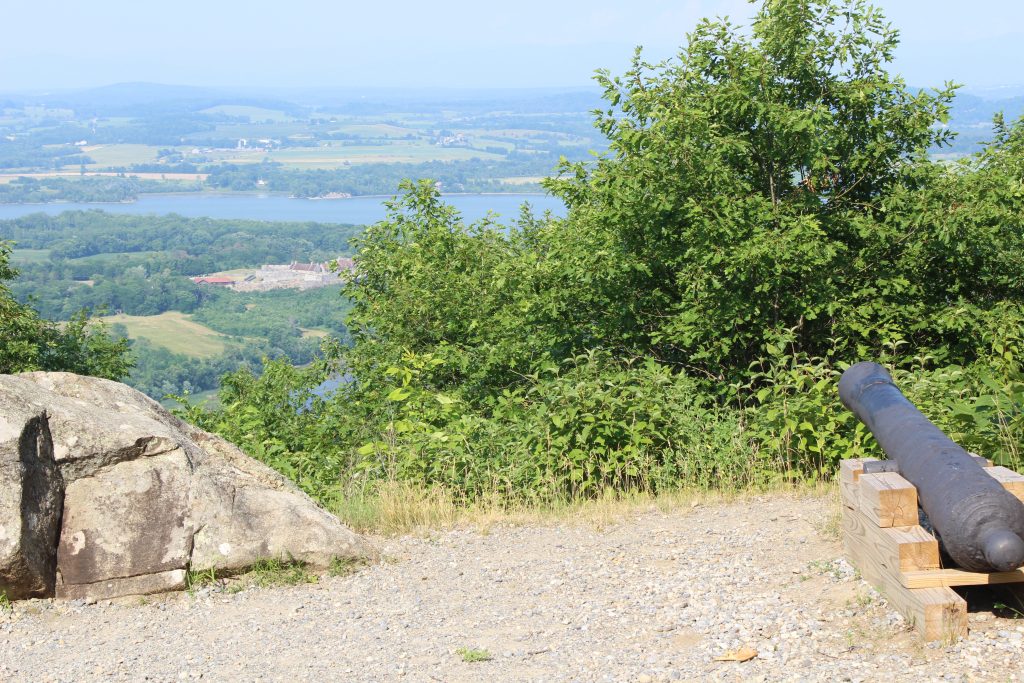
Cannons on Mount Defiance
We briefly drove through the town of Ticonderoga – pretty much a one horse town, but with some noticeable charm – and back to our B&B.
Exhausted, air conditioning and a shower in our room gave us the energy to rally and get out again for dinner. We decided to visit Lake Placid and get a lay of the land for 4th of July, only two days away. It was a short 30 minutes back through Keene Valley. On the way we saw the ski jumps from the Olympic training center, where the bobsled activity also was offered (we never ultimately took advantage of this because we ran out of time).
In town, we saw the huge Olympic Complex, and easily found parking nearby for $5 at the municipal lot. We discovered shortly after arriving the lake that the town was situated against was actually Mirror Lake, and that Lake Placid sat to the east. Hmm.
We settled on dinner at a bbq joint called Smoke Signals. The wait was an hour, but we were able to skunk two seats at the bar immediately. We ordered the bbq platter for two which was a great deal, and a ton of food. For the second night in a row, I had a disappointing Moscow Mule with the local Saranac ginger beer. After dinner we had ice cream at Emma’s, which was also disappointing – they served Hershey’s ice cream and didn’t even make their own, so I got soft serve ice cream after one of the locals recommended this was the only thing worth getting. It was just OK, and did not compare to Sweet Cooie’s in our very own Congress Park neighborhood in Denver. Brendan at least was able to find an ice cream offered in coffee flavor.
We returned home after dessert, around 11PM, read a little, and recharged our batteries for our next adventure.

[…] went inside to see the offerings, and it was fairly identical to what we already experienced at Fort Ticonderoga. At a $17 price-tag, we opted instead to just walk around Lake George. We immediately came across […]